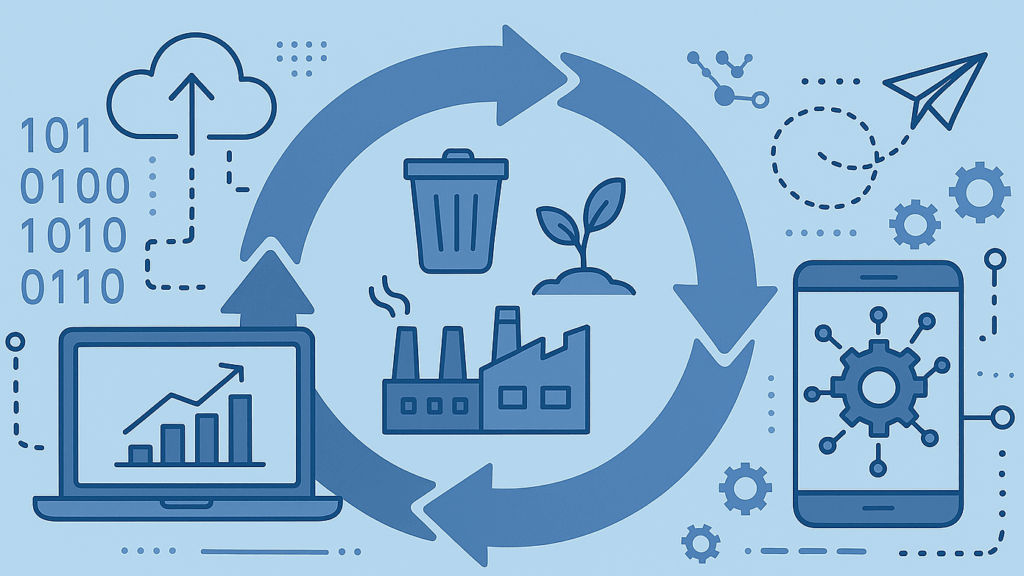A Future-Oriented View from the HI-EURECA-PRO Alliance
Introduction
In a rapidly digitalizing world, the preservation and activation of cultural, industrial, and mining heritage is undergoing a profound transformation. No longer confined to archives or physical reconstructions, heritage sites are being reimagined through immersive digital technologies. Across Europe—and particularly within the HI-EURECA-PRO university alliance—tools such as 3D scanning, photogrammetry, blockchain, AI, and extended reality (XR) are offering new pathways to safeguard and share our diverse pasts.
These technologies don’t just preserve artifacts and architecture—they democratize access, empower communities, and build resilient knowledge systems that can thrive even amid conflict, decay, or climate pressures. This article highlights some of the most impactful initiatives emerging from Poland, Greece, Belgium, and other HI-EURECA-PRO partner countries, illustrating how science and culture intersect through digital transformation.
1. 3D Digitization in Poland: Layered Access to National Identity
Poland has been a forerunner in integrating digital methods into cultural heritage management, especially in post-industrial regions rich in mining and religious history.
🔹 Polish Heritage 3D
This national initiative brings to light the architectural legacy of Polish communities abroad, using LiDAR and photogrammetry to digitize remote sites, such as churches in Brazil or the U.S. Designed for diaspora engagement, exhibitions like those at the Kozłówka Palace Museum offer VR tours powered by open-access digital archives.
🔹 Łódź Ethnographic Museum – Digital Twins for Immersive Storytelling
The Ethnographic Museum in Łódź employs Artec Leo 3D scanners to digitize rural architecture and folk objects, enabling interactive VR storytelling rooted in the traditions of central Poland.
🔹 National Museum in Szczecin
Leveraging structured-light scanning, the National Museum in Szczecin has digitized Romanesque church architecture and medieval brickworks, contributing open-source models to platforms like Sketchfab.
2. Blockchain for Authenticity and Provenance
One of the challenges in digital heritage is ensuring trust in authenticity. Here, blockchain technology plays an unexpected but powerful role.
🔸 Bank Pekao x Aleph Zero NFT Collection
In 2023, Bank Pekao collaborated with the Aleph Zero blockchain to mint NFTs of Polish art collections, ensuring verifiable provenance and ownership records. This innovation could be scaled to museum archives and digital heritage repositories—safeguarding against illicit art trafficking and forgery.
3. Digitization Across HI-EURECA-PRO Partner Countries
The wider HI-EURECA-PRO ecosystem includes several best practices in the field of digital heritage:
- 🇬🇷 Greece – Plan4COLD: This LIFE project aids municipalities in mapping cultural and natural sites using open data and digital registries.
- 🇫🇷 France: Universities are experimenting with light-wave 3D scanning of bronze and terracotta objects to capture delicate surface textures.
- 🇪🇺 Europeana: The European Commission’s central heritage platform offers access to over 58 million digital items—including thousands of 3D models of historic buildings and artifacts.
- 🇮🇹 AthenaPlus: Offers heritage institutions multilingual metadata management tools and a platform for generating interactive, virtual exhibitions.
4. Institutional and Technical Guidance
To ensure coherence and sustainability, digital heritage work must adhere to shared frameworks. The European Commission’s Expert Group on Digital Cultural Heritage provides a gold standard for such efforts.
📄 Download: 3D Digitisation Guidelines for Cultural Heritage (2022)
A national application of these standards is visible in the Wilanów Palace (Warsaw), where multi-scale laser scanning captures everything from façades to furnishings. Layers of data are used for conservation, AR visitor engagement, and academic study.
5. Living Labs Showcasing Heritage Transformation
Digital heritage does not evolve in a vacuum—it thrives in Living Labs that bring together citizens, researchers, and creatives. Below are some standout examples across Europe:
| Country | Living Lab | Description |
|---|---|---|
| 🇳🇱 Netherlands | Waag Futurelab | Community-driven digital co-creation for heritage and health |
| 🇫🇮 Finland | Smart Kalasatama | A smart district using sensors and apps to preserve historic docks |
| 🇩🇪 Germany | Cradle to Cradle Lab | Applies sustainability design to adaptive reuse of industrial sites |
| 🇮🇹 Italy | Matera Open Design Lab | Co-designing interactive museum content in a UNESCO town |
| 🇸🇮 Slovenia | DigiLab | Citizen science and digitization of local folklore archives |
| 🇧🇪 Belgium | iMinds Living Lab | Includes heritage-focused user testing environments |
| 🇵🇱 Poland | Kraków Technology Park Living Lab | Supports SMEs in XR and AR-based cultural innovation |
| 🇵🇱 Poland | SCAN3D Digital Twin Lab | Offers virtual reconstructions of post-industrial buildings and landscapes |
Conclusion
Applied thoughtfully, digital technologies can breathe new life into cultural heritage, preserving places and stories while forging inclusive, sustainability-driven futures. The case studies above demonstrate how 3D digitization, blockchain, VR/AR, and cross-border platforms work together to build a digital commons for Europe’s memory.
These practices directly support the HI-EURECA-PRO mission, which aims to advance heritage-based innovation, regional collaboration, and digital readiness across widening and non-widening countries. In the face of climate, demographic, and technological shifts, such digital transformations offer not just preservation, but renewal.




